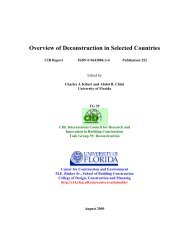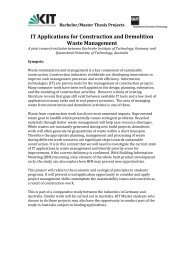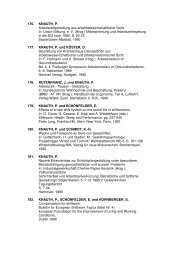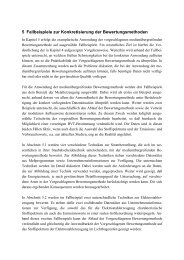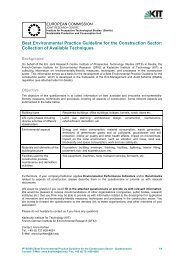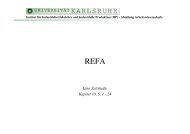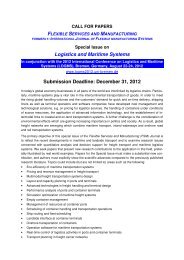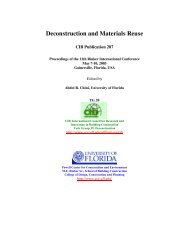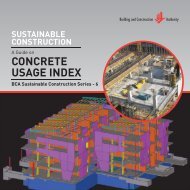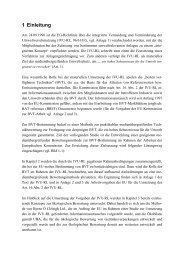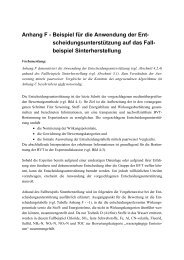Waste reduction final report -4 - Test Input
Waste reduction final report -4 - Test Input
Waste reduction final report -4 - Test Input
Create successful ePaper yourself
Turn your PDF publications into a flip-book with our unique Google optimized e-Paper software.
• Benchmarks for waste production linked to construction activity, for example typical<br />
wastage rates of a product or material. This enables targets to be set for improvement<br />
and waste <strong>reduction</strong> can then be measured.<br />
• Understanding the composition and causes of waste. This enables actions to reduce<br />
waste to be identified and prioritised.<br />
• Understanding the financial cost of waste: The overall cost of waste is a combination<br />
of the cost of materials wasted, labour to produce waste & clear it up, plus the cost of<br />
disposal or recovery.<br />
• Understanding the environmental cost of waste: This includes the environmental<br />
impacts associated with manufacturing and distributing the wasted products, e.g.<br />
embodied energy, which is usually far greater than the subsequent impacts associated<br />
with managing the waste material, especially if it is reused.<br />
• Landfill tax or bans: Have the effect of increasing the cost of waste management,<br />
which in turn increases the focus companies may have on preventing waste.<br />
• Voluntary commitments and agreements: Can lead to pan sector and supply chain<br />
improvements.<br />
• Supply chain partnerships: Can promote less wasteful practices such as precut<br />
materials, return of excess product and packaging, standardisation of stock.<br />
• Green Building standards to include credits for waste <strong>reduction</strong> and/or minimum<br />
performance requirements relating to waste generation.<br />
On an international basis, a G8 Meeting was held in Kobe in May 2008. The meeting adopted<br />
3R as a main objective of the meeting as well as climate change. It is unclear if this will have<br />
much impact on construction resource efficiency across the G8 nations. The Kobe 3R action<br />
plan has 3 main goals with many associated actions, a selection of which are included below 2 :<br />
Goal 1: Prioritize 3Rs Policies and Improve Resource Productivity<br />
- Share the importance of the spirit of mottainai 3 , minimize associated life cycle<br />
environmental impacts.<br />
- National governments to measure the environmental and economic effects of 3Rsrelated<br />
activities from a life cycle approach.<br />
- Improve Resource Productivity (indicator of tonnes resources used relative to GDP)<br />
and Set Targets<br />
- 3Rs and Greenhouse Gas Emission Reductions e.g. waste as alternative sources of<br />
energy to fossil fuel resources, organic materials in uses such as animal feed,<br />
composting, fermentation, and energy recovery.<br />
- Promote and create a market for 3Rs-related Products e.g. by encouraging research<br />
and development, certification and standards, promote the development of more ecoefficient<br />
products through green public procurement and other policy measures.<br />
Goal 2: Establishment of an International Sound Material-Cycle Society<br />
- To achieve sustainable resource circulation on a global scale, place high priority on<br />
the promotion of environmentally sound management of re-usable and recyclable<br />
resources within each country.<br />
- Share information and cooperate internationally on mechanisms to support proper<br />
international resource circulation such as eco-labelling, certification schemes, or<br />
traceability technologies.<br />
2 Kobe 3R action plan 2008. http://www.basel.int/meetings/cop/cop9/docs/i43e.pdf.<br />
3 Mottainai is a Japanese concept meaning that it is a shame for something to go to waste without having made<br />
use of its potential in full.<br />
7



